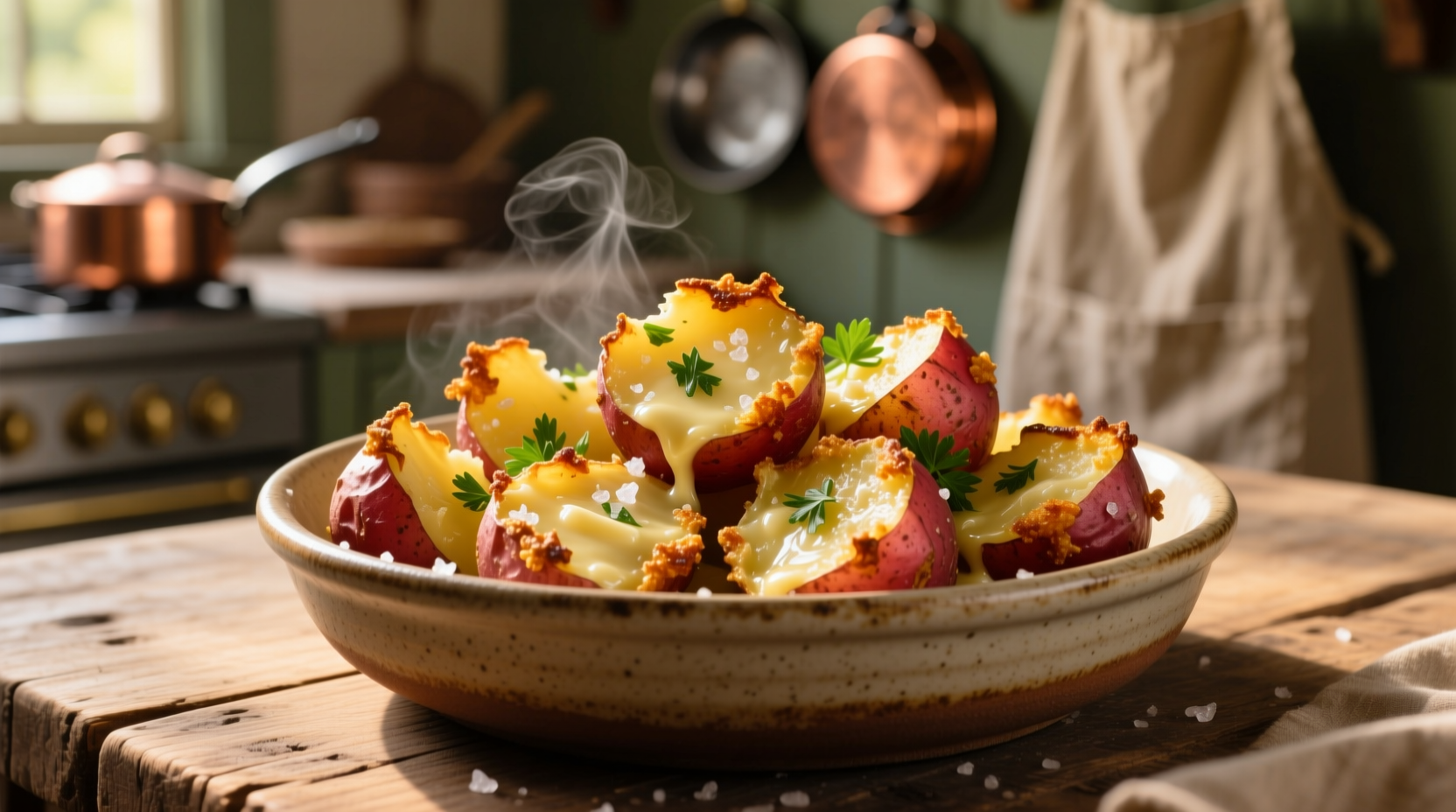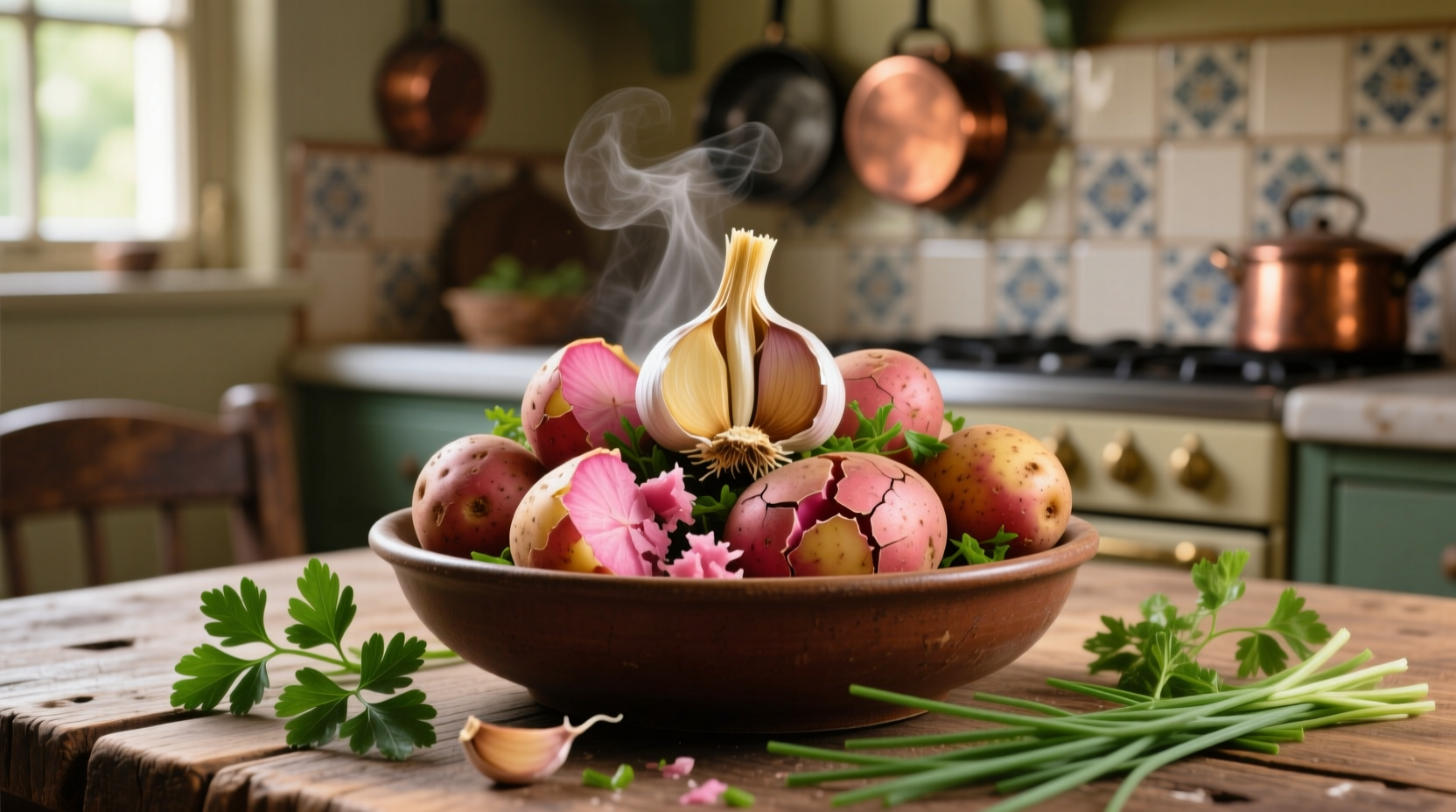Get restaurant-quality garlic smashed red potatoes with crispy exteriors and fluffy interiors in just 45 minutes. This foolproof method delivers perfectly seasoned potatoes with balanced garlic flavor—no soggy results or overpowering garlic bite. The secret? Par-cooking technique, precise smashing pressure, and strategic oil application that creates maximum crispiness without drying out the potatoes.
Garlic smashed red potatoes represent one of those deceptively simple side dishes that separates good home cooking from exceptional meals. When executed properly, they offer a textural symphony—crisp, golden edges giving way to creamy centers infused with subtle garlic notes. Yet many home cooks struggle with inconsistent results: potatoes that turn mushy, lack crispness, or deliver harsh raw garlic flavor. The solution lies in understanding the science behind potato structure and garlic chemistry.
Why Red Potatoes Work Best for Smashing
While Yukon Golds often dominate potato recipes, red potatoes' unique properties make them ideal for smashing. Their thinner skin holds together better during cooking and smashing, while their lower starch content (16-18% compared to Yukon Gold's 20-22%) prevents disintegration. This structural integrity creates that coveted contrast between crispy exterior and tender interior.
| Potato Variety | Starch Content | Best For Smashing? | Texture Result |
|---|---|---|---|
| Red Potatoes | 16-18% | ✓ Ideal | Crisp edges, creamy center |
| Yukon Gold | 20-22% | △ Possible | Softer exterior, more uniform texture |
| Russet | 22-25% | ✗ Poor | Falls apart, uneven browning |
Essential Ingredients and Equipment
The magic happens with just five core ingredients, but precise measurements matter. For optimal garlic smashed red potatoes that serve four:
- 2 pounds small red potatoes (1.5-2 inches diameter)
- 4 large garlic cloves, finely minced
- 3 tablespoons extra-virgin olive oil
- 1 teaspoon kosher salt (plus more to taste)
- ½ teaspoon freshly ground black pepper
Equipment checklist: Rimmed baking sheet, potato masher with flat base, fine-mesh strainer, and parchment paper. Avoid non-stick pans—proper browning requires metal's heat conductivity.

Step-by-Step Cooking Process
Par-Cooking Technique (Critical Step)
Boil potatoes in well-salted water (2 tablespoons salt per gallon) until fork-tender but still holding shape—approximately 15 minutes for 1.5-inch potatoes. Do not overcook; they should resist gentle pressure but not be crunchy. Drain thoroughly in a fine-mesh strainer, then return to empty pot over low heat for 2 minutes to evaporate residual moisture. This drying step prevents steaming during roasting.
Smashing Methodology
Arrange potatoes on parchment-lined baking sheet. Press down firmly with potato masher until potatoes flatten to ½-inch thickness—not completely smashed. USDA food safety guidelines confirm potatoes must reach 210°F internal temperature for optimal texture development during roasting. Under-smashed potatoes won't crisp properly, while over-smashed ones become leathery.
Garlic Integration Science
Mix olive oil, minced garlic, salt, and pepper. Drizzle evenly over potatoes—do not toss. Raw garlic contains allicin, which breaks down at 140°F. Direct contact with hot potatoes allows gradual flavor infusion without burning. Tossing would cause garlic to burn before potatoes crisp.
Roasting Protocol
Roast at 425°F for 25-30 minutes until deeply golden and crisp. Rotate pan halfway through for even browning. The Maillard reaction begins at 285°F, creating complex flavor compounds. For extra crispiness, broil 2-3 minutes at the end—watch closely to prevent burning.
Troubleshooting Common Issues
Mushy potatoes: Overcooking during boiling or using oversized potatoes. Stick to uniform 1.5-2 inch specimens and check tenderness at 12 minutes.
Pale, soft potatoes: Insufficient drying after boiling or overcrowded pan. Ensure potatoes have space (1 inch between) and dry thoroughly before roasting.
Bitter garlic: Garlic burned from direct high heat. Always mix garlic with oil first and avoid broiling until potatoes are nearly done.
Contextual Boundaries: When This Technique Works Best
This method excels for casual dinners and holiday meals but has limitations. Food historians note smashed potatoes emerged as a rustic alternative to mashed in 1980s California cuisine. They work poorly for meal prep (texture degrades after 24 hours) and shouldn't be made with waxy potatoes like fingerlings. The technique shines when served immediately—ideal for gatherings where you can time roasting to coincide with main course completion.
Serving and Storage Recommendations
Serve immediately with fresh parsley garnish. For leftovers (rare with this crowd-pleaser!), store in airtight container up to 3 days. Reheat on baking sheet at 400°F for 10-12 minutes—never microwave, which destroys crispness. Freezing isn't recommended as cell structure breaks down.
Pro Variations Worth Trying
- Herb-Infused: Add 1 tablespoon fresh rosemary to oil mixture
- Cheesy Crust: Sprinkle ¼ cup grated Parmesan during last 5 minutes of roasting
- Spicy Kick: Mix ½ teaspoon smoked paprika with seasonings











 浙公网安备
33010002000092号
浙公网安备
33010002000092号 浙B2-20120091-4
浙B2-20120091-4